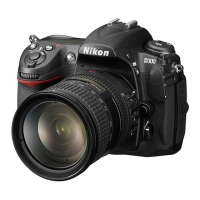ultimate control, the camera gives you a way to control
multiple groups of flash units in a manual way.
▪ – – The flash units in the group do not fire.
“Double-dash” mode disables an entire group so that you
can concentrate on configuring the other group. Then
you can turn the disabled group back on and configure it
too. Or, you can just use one group of slaved Speedlights
(A or B) and disable the other.
Channel – This one channel controls all slaved flash units.
You must match the Channel number for the camera and each
flash unit. This is the channel on which communications flow
to all grouped, remote flashes. You have a choice of four
channel numbers, 1-4. This allows you to use your flash units
near another photographer who is also controlling groups,
without firing the other person’s flash units accidentally. You
just each choose a different channel.
An upcoming chapter of this book titled Chapter 12 is
devoted to using Nikon’s Creative Lighting System (CLS)
and covers each of the Commander modes and flash unit
types in more detail than the summary found here.
Commander Mode Notes
When using multiple flash units under the control of your
camera in Commander mode, it is important that you
understand the following.
First, the camera communicates with the remote slaved flash
groups (A and B) during the monitor pre-flash cycle, so the
pop-up flash must be raised in Commander mode in order to
communicate with the remote flash units.
359

